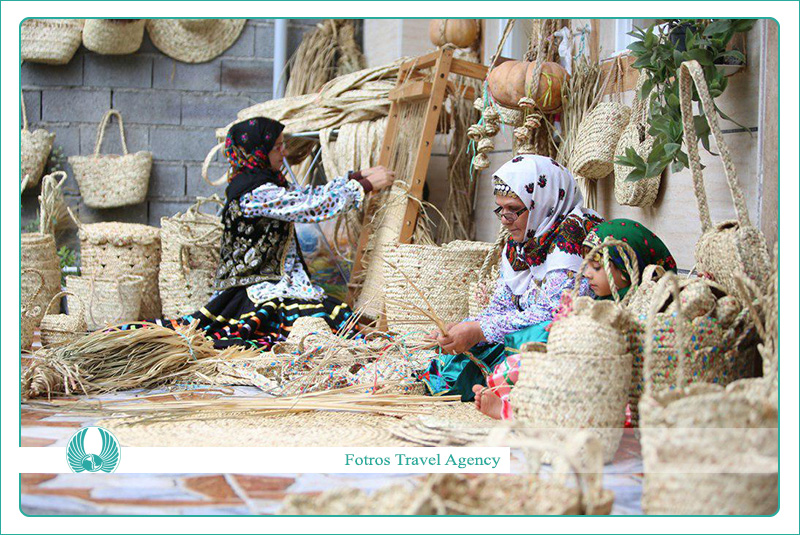
Mazandaran Handicrafts
Mazandaran Handicrafts
Lak Tarashi (a kind of wood engraving):
One of the oldest handicrafts in Mazandaran, this art was first developed by villagers lived in the Mazandaran forests. They were able to use certain trees to produce wooden tools, due to the fact of being familiar with various kinds of trees. The villagers used a very simple and primitive tool, produced a variety of wooden products such as containers, spoons, ladles, sugar boxes, and so on. Artists use trees such as Beech, Alder, Maple, Box, and etc. to make wooden tools.
Mat Waving:
Being so popular in Mazandaran province, especially in the western villages, for waving these handicrafts, two plants, named Kaleh and Vash that grow in the edge of swamps and basins, are used. Sometimes reeds and pipes are applied instead of making baskets and hampers.

Socks Waving:
Having a good reputation in Mazandaran province, in the villages socks are waved by lambswool and colored by natural materials and substances. Beautiful designs and patterns show the delicacy of the wavers’ souls.
Felt:
Being prepared of sheep wool, so colors such as white, black and brown are notable. Chemical colors are also used for creating eye-catching different designs.
Wood Craving:
according to the environmental conditions and forests in the north part of Iran, decorating and craving of wood in Mazandaran province, have been always so popular. Traces from fifth to the eighth centuries indicate the antiquity of wood craving this area.
Jajim Waving:
Jajim weaving is an authentic traditional handicraft in Mazandaran. After waving the marginal part, the main design in the center, called "flowers" play a great role in the background of this handmade object.
Carpet:
Carpet is a part of Iranian lifestyle so it is crystal clear to be waved and used in different provinces. Applying different designs and patterns in carpets are based on the culture, customs and the natural spots around the wavers of that area.

Written by: Najmeh Haghi
Related Tags:





We love to hear your comments